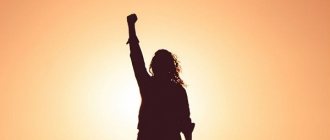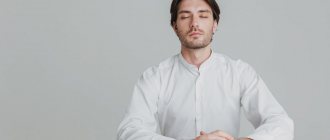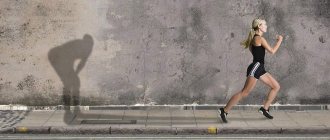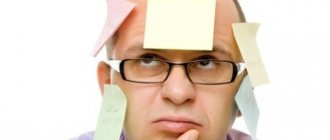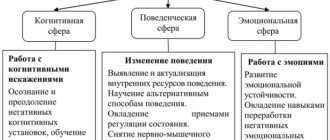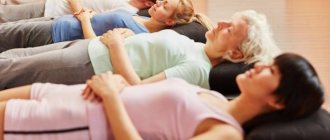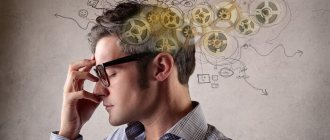Some people want to lose weight, others want to tighten up a little, and others want to move for the sake of their mood and well-being.
You can achieve concrete results not only with the help of a coach and an expensive club. A more effective way is self-control.
Self-control during sports is necessary in order to correctly assess your strengths and capabilities, determine which exercises and loads are beneficial and which are better to avoid.
To increase the effectiveness of training, professional athletes must keep self-monitoring diaries, in which they record objective indicators of health status and subjective sensations and even emotions, you name it.
Here are the main subjective indicators that need to be recorded in the diary.
Body mass
Normal body weight depends on age, height, body type. The physique can be normosthenic (proportional, beautiful), asthenic (bones and chest are narrow) and hypersthenic (heavy bones, wide silhouette).
Body type is not the same as body type. The female figure is divided into T-shaped, or “apple”, when the chest circumference is wider than the hip circumference, X-shaped, or normal, and A-shaped, or “pear-shaped”, when the hips are noticeably wider than the shoulders.
A person develops in accordance with his inclinations and habits.
Basic girths
Girth, or body volume, reacts earlier to the start of training than weight itself. So, you’ve been training for two months, but the weight is still there... For such cases, monitoring volumes will be indispensable.
Volumes, like weight, should be measured at rest in the morning after using the toilet. Measurements are taken using a measuring tape.
Basic measurements recommended for men and women: chest girth, waist girth, hip girth, one thigh girth, biceps girth, neck girth, for overweight people - girth just under the navel, about three fingers below (this is called abdominal girth).
Lung capacity
The amount of air a person exhales after taking a deep breath. The vital capacity of the lungs is checked once a month in the doctor's office using a special spirometer device.
Spirometry data in healthy men ranges on average from 3500 to 5000 cc. cm, for women - from 2500 to 3500 cc. cm Lung capacity increases with training time.
Immediately after active gymnastic exercises, the lungs expand by 100 - 200 cubic meters. cm, when tired - they “fall” by the same amount. You should know that a persistent decrease in lung vital capacity is one of the characteristic signs of overload!
Introduction
The healing effects of physical exercise on the human body have been known since ancient times. Their great importance for fighting diseases and prolonging life was pointed out by many generations of Greek doctors and philosophers in their works and statements. Thus, Aristotle said: “Life requires movement”... “Nothing depletes and destroys a person more than prolonged physical inactivity.”
Physical exercise is a very powerful means of changing a person’s physical and mental state. Properly organized classes strengthen health, improve physical development, increase physical fitness, and improve the functional systems of the human body. At the same time, it is necessary to understand that the uncontrolled and unsystematic use of physical education means is ineffective, and in some cases can cause irreparable harm to health, and everyone can give many examples of this. Monitoring and self-control measures for those involved themselves are designed to eliminate all conditions under which negative effects of physical exercise and sports may occur.
The purpose of control is to optimize the process of physical exercise based on an objective assessment of the state of the body.
Thanks to self-observation, the athlete has the opportunity to independently control the training process. In addition, self-control has great educational and pedagogical significance, accustoming the athlete to active observation and assessment of his condition, to analyzing the training methodology used.
Without physical activity, self-control decreases
Megan Oaten, a psychologist, and Ken Cheng, a biologist (from Kelly McGonigal's book Willpower: How to Develop and Strengthen it) from Macquarie University in Sydney recently finished testing a new treatment that increases self-control. The “guinea pigs” were six men and 18 women aged from
18 to 50 years old. After two months of treatment, they were able to concentrate better and
were less distracted. But that was not all. The subjects smoked less and reduced their consumption of alcohol and caffeine - although no one asked them to do this. They ate less junk food and more healthy food. We spent less time watching TV and more time studying. We saved money and spent less on spontaneous purchases. Feeling in control of your emotions. What is this miracle medicine and who will write the prescription?
Physical exercise worked wonders for self-control. Participants who had not previously exercised regularly were given a gym membership and encouraged to use it. In the first month they worked out about once every seven days, but by the end of the second month they were going to the gym three times a week. The researchers didn't ask them to make any other changes, and yet, thanks to sports training, people seemed to discover a new source of strength in themselves and became better at self-control in all areas of their lives.
Exercise, like meditation, enlarges and speeds up the brain, especially the prefrontal cortex.
Heart
To monitor the cardiovascular system, you need to measure your pulse before and after exercise.
Place 4 fingers on your wrist (closer to the thumb), find the pulse impulse. Count the beats for 15 seconds and multiply the number of beats by 4, or count the beats for 30 seconds and multiply by 2.
Changes in heart rate indicate how we can tolerate physical activity. The pulse of a healthy person at rest is 60 - 80 beats per minute. Against the background of systematic exercise, the resting pulse decreases - this is an indicator of an increase in the fitness of the heart.
During the exercises themselves, after a small load, the pulse increases by 8 - 12 beats, after moderate exercise - by 15 - 20, and after heavy exercise - by more than 40 - 60 beats per minute. If you have a healthy heart, your pulse quickly returns to normal and “calms down” 15 to 30 minutes after exercise.
If an hour, an hour and a half has passed, and your pulse after training still remains elevated, this may indicate general fatigue of the body or, unfortunately, disorders of the cardiovascular system. You should consult a doctor and temporarily refrain from exercising.
Be smart!
The work was added to the website samzan.ru: 2015-07-10
Abstract: Self-control of those involved in physical exercises and sports
Content
| Introduction………………………………………………………………………………………… | 3 |
| 1. Diagnostics and self-diagnosis of the body during physical exercise and sports……………………………………………………….… | 4 |
| 1.1. Medical supervision………………………………………………………………..… | 4 |
| 1.2. Pedagogical control, its content….………………………… | 5 |
| 2. Self-control…………………………..……………….……………………… | 6 |
| 2.1. Self-control indicators……………………………………………………………….. | 7 |
| 2.2. Self-control diary……………………………………………………… | 10 |
| 3. Methods of standards, anthropometric indices, nomograms, functional tests, exercises, tests for assessing physical development and physical fitness………………………………….. | 12 |
| 4. Correction of the content and methodology of physical exercises based on the results of self-control………………………………… | 16 |
| 5. Prevention of injuries and negative reactions of the body during physical exercise and sports……………………………. | 16 |
| Conclusion……………………………………………………………………… | 21 |
| Bibliography……………………………………………. | 22 |
Introduction.
There is only one way for a person to achieve harmony - systematically performing physical exercises.
With regular physical exercise, the activity of all organs and systems is activated, muscle volume increases, metabolic processes are enhanced, and the cardiovascular system is improved. Thus, the physical fitness of those involved improves, loads are easily tolerated, and previously inaccessible results in various types of physical exercises become the norm.
The basis for the achievement of sports results and its growth by professional athletes are the adaptation processes occurring in the body. Training and competitive activities are the basis for their improvement.
But without monitoring the training process and the athlete’s health, it is impossible to achieve high results without costs to health. For this purpose, there is pedagogical and medical supervision.
But before you control something, you need to determine what exactly and what indicators to evaluate, what their initial levels and condition are. In other words, we need scientific diagnostics.
Obviously, control will be more effective only if it is preceded by an objective diagnosis.
1. Diagnostics and self-diagnosis of the body during physical exercise and sports.
Under the influence of physical activity, changes occur in the organs and systems of the human body. To ensure that physical exercise and sports do not have a negative impact on human health, it is necessary to regularly monitor the condition of the body. This is a task not only for doctors and teachers, but also for the practitioners themselves.
The main types of diagnostics include: medical control, pedagogical control and self-control.
The purpose of diagnosis is to promote human health and its harmonious development.
1.1. Medical supervision.
Medical control is a scientific and practical branch of medicine that studies the state of health, physical development, and functional state of the body of those involved in physical exercises and sports [4]. The main task of medical supervision is to ensure the correctness and high efficiency of educational training sessions and sports events. Medical control is intended to exclude all conditions under which negative effects from physical exercise and sports may appear on the body of those involved. Medical control is a mandatory condition for preventing injuries in the process of physical education of students and is carried out in accordance with the “Regulations on medical control over physical education at a university.”
Medical control at the university is carried out in the following forms:
- regular medical examinations and monitoring of those involved in physical exercises and sports;
— medical and pedagogical observations of students during classes and competitions;
— sanitary and hygienic control over places, conditions of classes and competitions;
— sanitary and educational work, promotion of physical culture and sports, healthy lifestyle;
— prevention of sports injuries and diseases;
— carrying out comprehensive and restoration measures.
For students, a medical examination is carried out before the start of the academic year once a year. For people with health problems - 2 times a year, and for people actively involved in sports 3-4 times a year. Annual medical examinations of students allow us to study the state of health, physical development and functional abilities of the most important systems of the body, as well as establish the medical group of students involved. Established by long-term practice of medical supervision, the distribution of students occurs into groups: main (without deviations in health status); preparatory (without deviations, but with insufficient physical development and preparedness); special (have health problems and require limited physical activity).
This allows you to correctly dose physical activity during physical education classes in accordance with the health status of the students.
1.2. Pedagogical control, its content.
Pedagogical control is a systematic process of obtaining information about the physical condition of those involved in physical culture and sports. It is carried out in order to check whether the pedagogical impact corresponds to increasing the effectiveness of academic and training sessions.
Tasks of pedagogical control:
— evaluate the effectiveness of the training means and methods used;
— carry out the training plan;
— establish control standards that evaluate the physical, technical, tactical, theoretical preparedness of athletes;
— identify the dynamics of development of sports results and predict the achievements of individual athletes;
— select talented athletes.
Contents of pedagogical control:
— monitoring class attendance;
— control over training loads;
— monitoring the condition of those involved;
— control over exercise technique; Accounting for sports results;
- control over behavior during competitions.
2. Self-control.
Self-control is a method of self-observation of the state of one’s body during physical exercise and sports [1]. Self-control is necessary to ensure that exercises have a training effect and do not cause health problems. Self-monitoring consists of simple publicly available observation techniques consisting of taking into account subjective indicators (well-being, sleep, appetite, desire to exercise, exercise tolerance, etc.) and objective indicators (weight, pulse, spirometry, respiratory rate, blood pressure, dynamometry). Self-control must be carried out during all periods of training and even during rest. Self-control has not only educational value, but also teaches you to be more conscious about your activities, to observe the rules of personal and public hygiene, study, work, life and rest. The results of self-control should be regularly recorded in a special self-control diary, the objectives of which are:
1. Expand knowledge about physical development.
2. Acquire skills in assessing psychophysical fitness.
H. Get acquainted with the simplest available methods of self-control.
4. Determine the level of physical development, fitness and health in order to adjust the load.
The goal of self-control is independent, regular observation in simple and accessible ways of physical development, the state of one’s body, the influence of physical exercise or a sport on it. Self-monitoring allows you to promptly identify the adverse effects of physical exercise on the body.
Self-control is an essential addition to medical and pedagogical control, but in no case replaces them. Self-control can be of a medical or pedagogical nature, or it can include both. Self-monitoring data is of great assistance to the teacher in regulating physical activity, and to the doctor in timely signaling about deviations in health status.
2.1. Self-control indicators.
Self-control indicators can be divided into 2 groups:
— subjective;
- objective.
Subjective indicators include: well-being (good, satisfactory, bad); sleep (duration, depth, disturbances); appetite (good, satisfactory, poor); mental and physical performance; positive and negative emotions - stress.
A low subjective assessment of each of these indicators can serve as a signal of deterioration of the body, be the result of overwork or emerging ill health.
Mood. A very significant indicator reflecting the mental state of those involved in physical exercises. Exercise should always be fun. The mood can be considered good when a person is confident, calm, and cheerful; satisfactory - when the emotional state is unstable and unsatisfactory when a person is upset, confused, depressed.
Well-being. It is one of the important indicators for assessing physical condition and the effect of physical exercise on the body. Those who exercise usually feel unwell due to illness or when the functional capabilities of the body do not correspond to the level of physical activity performed. The state of health can be good (feeling of strength and vigor, desire to exercise), satisfactory (lethargy, loss of strength), unsatisfactory (noticeable weakness, fatigue, headaches, increased heart rate and blood pressure at rest, etc.).
Fatigue. Fatigue is a physiological state of the body, manifested in a decrease in performance as a result of work performed. It is a means of training and increasing performance. Normally, fatigue should subside 2-3 hours after exercise. If it lasts longer, this indicates the inadequacy of the selected physical activity. Fatigue should be fought when it begins to turn into overwork, i.e. when fatigue does not disappear the next morning after training.
Dream. The most effective means of restoring the body's performance after physical exercise is sleep. Sleep is critical for nervous system recovery. Sleep is deep, sound, and comes immediately - causing a feeling of vigor and a surge of strength. When characterizing sleep, the duration and depth of sleep, its disturbances (difficulty falling asleep, restless sleep, insomnia, lack of sleep, etc.) are noted.
If a person cannot sleep for a long time, then you can use the following method. Lying in bed, closing your eyes, imagine a windmill with water flowing through it. You go inside this mill and the flowing water washes you. This improves falling asleep quickly.
Appetite. The more a person moves and exercises, the better he should eat, as the body’s need for energy substances increases. Appetite, as we know, is unstable; it is easily disrupted by illness and illness, or by overwork. With a lot of intense exercise, appetite can sharply decrease. It is not recommended to eat after class; it is better to wait 30-50 minutes.
Performance. Rated as increased, normal and decreased. With proper organization of the educational and training process, performance should increase over time.
Load tolerance. It is an important indicator that evaluates the adequacy of physical activity to the functional capabilities of the student.
The next type of subjective indicators of self-control is pain. These include pain in the side, which most often occurs when performing cyclic physical exercises. Also, pain is caused by a number of reasons: physical activity immediately after eating, improper breathing (too deep breaths), poor physical condition, overload. Pain in the right hypochondrium is explained by liver overflow with blood. In this case, the liver swells and puts pressure on the membrane covering it - the capsule. Stretching the capsule causes pain.
Pain in the left side of the abdomen is usually a consequence of the spleen overflowing with blood. If such pain occurs while covering the distance, you should take a deep and smooth breath several times and, while walking, make several massaging movements at the site of pain. If the pain does not go away, you need to reduce the intensity of the exercises and give yourself rest.
Almost always, students who begin active physical exercise experience muscle pain the next day. This phenomenon is temporary, purely physiological. You can ease its progress in several ways: self-massage of painful areas, bath, steam bath.
An objective indicator of self-control is the influence of the training process on the state of the cardiovascular system and the body as a whole. An objective indicator can also be a change in breathing rate: with increasing training, the breathing rate at rest becomes less frequent, and recovery after physical activity occurs relatively quickly. An indicator of self-control that reflects the state of the cardiovascular system is pulse - heart rate. A pulse rate of 40 beats/min or less is a sign of a well-trained heart, or a consequence of some pathology.
An important indicator characterizing the function of the cardiovascular system is the level of blood pressure. Rapid recovery (within a few minutes) of pressure indicators indicates the body’s preparedness for physical activity.
2.2. Self-control diary.
For a self-control diary, it is enough to use a small notebook. Self-monitoring readings and dates are entered in the columns.
The diary consists of two parts. One of them should indicate the content and nature of the educational and training work (volume and intensity, pulse rate during its implementation, duration of recovery after exercise). The other notes the magnitude of the load of the previous workout and the accompanying well-being during wakefulness and sleep, appetite, and performance. Qualified athletes are recommended to take into account their mood (for example, reluctance to train), the results of the reaction to some functional tests, the dynamics of vital capacity of the lungs, general performance and other indicators. Self-monitoring is necessary for all students, graduate students, interns, teachers and staff involved in physical exercise, but it is especially important for individuals with health conditions. Self-monitoring data helps the teacher, trainer, instructor and the students themselves to monitor and regulate the correct selection of means and methods for conducting physical education and academic training classes, and to manage these processes in a certain way.
The following is suggested as a form of keeping a diary.
Well-being is assessed as “good”, “satisfactory” and “bad”; At the same time, the nature of unusual sensations is recorded. Sleep is assessed by duration and depth, and its disturbances are noted (difficulty falling asleep, restless sleep, insomnia, lack of sleep, etc.). Appetite is characterized as good, satisfactory, reduced and poor. Painful sensations are recorded according to their location, nature (sharp, dull, cutting) and strength of manifestation.
Body weight is determined periodically (1-2 times a month) in the morning on an empty stomach, on the same scales, in the same clothes. In the first
During the training period, body weight usually decreases, then stabilizes and subsequently increases slightly due to an increase in muscle mass. If there is a sharp decrease in body weight, you should consult a doctor.
Training loads are recorded briefly. Together with other indicators of self-control, they make it possible to explain various deviations in the state of the body.
Violations of the regime. The diary notes the nature of the violation: non-compliance with the alternation of work and rest, violation of the diet, consumption of alcoholic beverages, smoking, etc. For example, the consumption of alcoholic beverages immediately negatively affects the state of the cardiovascular system, the heart rate sharply increases and leads to a decrease in sports results.
Sports results show whether the means and methods of training sessions are used correctly or incorrectly. Their analysis can reveal additional reserves for the growth of physical fitness and sportsmanship.
Assessment of physical development using anthropometric changes makes it possible to determine the level and characteristics of physical development, the degree of its correspondence to gender and age, identify existing deviations, and also determine the dynamics of physical development under the influence of physical exercise and various sports.
Anthropometric measurements should be carried out periodically at the same time of day, according to generally accepted methods, using special standard, verifiable instruments. During mass examinations, height, standing and sitting, body weight, chest circumference, vital capacity (VC), hand flexor strength and other indicators are measured.
3. Methods of standards, anthropometric indices, nomograms, functional tests, exercises, tests for assessing physical development and physical fitness.
Based on anthropometric data, it is possible to assess the level of physical development using anthropometric indices. Let's look at some of them.
The height index determines the ratio of height in centimeters and weight in kilograms. To determine the normal weight of an adult, you need to subtract 100 from the figure indicating height in centimeters - for a height of 165-175 cm and 110 for a higher height.
The weight-height indicator is calculated by dividing body weight (in grams) by its length (in centimeters). A good estimate for women is 360-405 g/cm, for men - 380-415 g/cm.
The vital index is determined by dividing the figure indicating the vital capacity of the lungs by body weight (in grams). An indicator below 65-7 ml/kg in men and 55-60 in women indicates insufficient vital capacity of the lungs or excess weight.
The strength index is the ratio of the hand strength of the stronger arm (in kilograms) to body weight. On average, the strength index is 0.70-0.75 for men, and 0.50-0.60 for women.
Index of proportionality between height and chest circumference. It is calculated as follows: the chest circumference (in centimeters) during the pause is multiplied by 100 and divided by the height in centimeters. Normally, this index is 50-55%.
The proportionality between height and shoulder width is determined by the ratio of shoulder width to height (in cm) and is expressed as a percentage for men - 22%, for women - 21%.
Index of proportionality between chest development and half body length. If the difference is 5-8 cm for men and 3-4 cm for women or exceeds the named numbers, this indicates good development of the chest; if it is less than the named numbers or has negative values, then the chest is poorly developed.
The body strength indicator reflects the difference between body length and the sum of body weight and chest circumference at exhalation. For example, with a height of 181 cm and a body weight of 80 kg, a chest circumference of 90 cm, this indicator will be: 181-(80+90)=11. In adults, a difference of less than 10 can be assessed as a strong physique, from 10 to 20 as good, from 21 to 25 as average, from 26 to 35 as weak and more than 36 as very weak. However, the body strength indicator, which depends on chest circumference and body weight, does not reflect muscle development, but is a sign of obesity.
The coefficient of proportionality (CP) as a percentage is calculated by the formula:
KP=L1-L2/L2*100,
where L1 is the length of the body in a standing position,
L2 - body in a sitting position.
CP = 87-92% is considered normal.
The results of assessments of the indicator of physical development according to the standards can be depicted graphically - such an image is called an anthropometric profile. This method is used in medical and physical education clinics, as well as in working with national teams and high-class athletes. Average data are developed from a mass representative survey. To obtain an anthropometric profile, deviations of an athlete’s individual indicators from the average data for the group, age, and gender are assessed.
Along with the anthropometric profile, in the practice of medical control, nomograms are used - graphs of physical quantities used in calculations of physical development and physical performance.
The health, functional state and fitness of an athlete can be determined using functional tests and control exercises.
Functional tests can be general (nonspecific) and with specific loads. Which are carried out, as a rule, in natural conditions of sports activity with loads of varying intensity.
Assessment of functional readiness is also carried out using physiological tests. These include heart rate monitoring (HR) and the aforementioned orthostatic test. In addition, to assess the state of the respiratory and cardiovascular systems and the ability of the internal environment of the body to be saturated with oxygen, the Stange test and the Genchi test are used.
Stange's test (holding your breath while inhaling). After 5 minutes of rest while sitting, take 2-3 deep breaths in and out, and then, after taking a deep breath (80-90% of the maximum), hold your breath. The time from the moment the breath is held until it resumes is noted. The average indicator is considered to be a breath holding time of 60 seconds. A trained person has a longer breath holding time. If you are sick or overworked, this time can be reduced to 30-35s.
The Genchi test (holding the breath while exhaling) is performed in the same way as the Stange test, only the breath is held after a complete exhalation. Here, the average indicator is considered to be the time of holding your breath while exhaling up to 30 seconds. In case of diseases of the respiratory system, circulatory system, after infectious and other diseases, as well as as a result of overexertion and fatigue, when the general functional state of the body deteriorates, the duration of breath holding during both inhalation and exhalation decreases.
One-stage functional test with squats. The trainees rest while standing in the main stance for 3 minutes. At the 4th minute, the heart rate is calculated for 15 seconds, recalculating to 1 minute (initial frequency). Next, perform 20 deep squats for 40 seconds, raising your arms forward, spreading your knees to the sides, while maintaining your torso in an upright position. Immediately after the squat, the heart rate is again calculated for the first 15 seconds, recalculated per minute. The increase in heart rate after squats is determined in comparison with the initial one as a percentage. Rating for men and women: excellent - 20 or less, good - 21-40, satisfactory - 41-65. bad - 66-75, very bad - 76 or more.
In the practice of medical supervision, a combined test is used, as correctly: 20 squats for 30 seconds, 15 seconds of running in place at a fast pace (180 steps per minute). This test allows us to judge the adaptive reactions of the body's cardiovascular system to speed work and endurance work.
Another way to assess physical condition is testing as the application of control standards. Thus, in the practice of physical education in educational institutions, mandatory tests are used: running 100 m (an indicator of the quality of speed), pulling up for students, raising and lowering the body from a lying position for female students (an indicator of strength readiness) and running 2000 m for female students and 3000 m for students (endurance indicator). At the beginning of the school year, tests are carried out as controls, at the end - as recording changes over the past school year.
4. Correction of the content and methodology of physical exercises based on the results of self-control.
In order to adjust the method of physical exercise, regular observations are necessary over a certain period of time. Let us give an example of monitoring the development of strength in the flexor muscles of the hand. The research was carried out in 1996 on groups of boys and girls. Hand strength was determined during athletic gymnastics classes from October to April. For students, from October to December, hand strength increased by 1.6 kg, and for female students, during the same time, it decreased by 2.6 kg. After exams and holidays, the results for boys are 4.3 kg lower, and for girls - 3.7 kg. For students, from February to April the result continues to decrease and in April it is 52.0 kg, for girls it increases by April to 37.5 kg.
Consequently, the load was insufficient and became the reason that the strength of the hand of the students after classes changed slightly; this requires reconsidering and increasing the load in athletic gymnastics classes.
5. Prevention of injuries and negative reactions of the body during physical exercise and sports.
Trauma is damage to tissue integrity caused by some external influence. When engaging in physical education, physical injuries most often occur; closed injuries predominate (bruises, sprains, tears, ruptures, etc.) [3].
The causes of sports injuries include the following:
— shortcomings and errors in the methodology of conducting classes (forced training, poor warm-up without taking into account age, gender, physical fitness, etc.);
- shortcomings in the organization of classes (poor lighting, unprepared equipment, coverings, etc.);
— uncomfortable sportswear, shoes;
— unfavorable climatic and hygienic conditions (humidity, air temperature, pool water, etc.);
— incorrect behavior of the student (haste, inattention.);
— congenital features of the musculoskeletal system;
— overwork, leading to impaired coordination of movements;
— failure to comply with deadlines for resuming classes after injuries or illnesses;
— violation of medical requirements for organizing the training process (admission to classes without a medical examination).
Prevention of injuries during physical exercise and sports should include:
1. compliance with sanitary and hygienic requirements (room temperature, humidity, lighting, comfortable sportswear, etc.);
2. compliance with the methodological principles of physical education (do not force loads, take into account preparedness, age, gender, systematic training, health status, etc.);
3. insurance and other methodological techniques characteristic of a particular type of occupation.
Negative reactions of the body during physical exercise and sports, which can lead to injuries and diseases, include the following: fatigue, overwork, fainting, acute physical overexertion, gravitational shock, orthostatic collapse, hypoglycemic shock, sun and heat stroke [5].
Fatigue is a physiological state of the body, manifested in a temporary decrease in performance as a result of work performed. This is a kind of disproportion between the expenditure and restoration of energy substances. Fatigue serves as a natural signal of possible exhaustion of the body and at the same time as a protective biological mechanism that protects it from overexertion. Frequent repeated physical work in the absence of rest, insufficient sleep, irregular nutrition, and also in the event of a deviation in health can lead to a state of fatigue. The symptoms of overwork can increase gradually, imperceptibly, sleep is disturbed, appetite worsens, then a feeling of fatigue appears, reluctance to exercise, sweating increases, weight decreases, and other disorders appear. With severe and severe fatigue, the body's resistance to colds and infectious diseases decreases.
Fainting may result from gross violations of methodological and sanitary-hygienic requirements during classes. For example, excessive physical activity during exercise can cause a decrease in venous tone or vascular spasm, which leads to a sharp decrease in blood access to the brain and loss of consciousness. Fainting can also occur during hyperventilation of the lungs from intensive and prolonged use of breathing exercises, when the content of carbon dioxide, which is a stimulant of the respiratory center, sharply decreases in the blood. As a result, the respiratory rate decreases, the “respiratory pump” ceases to function, the vessels in the periphery become overfilled with blood, the venous blood flow to the heart decreases, and brain anemia occurs. Acute physical overstrain occurs when a student overestimates his physical capabilities and tries to perform physical exercises that are excessive in duration and intensity.
Gravity shock occurs when you suddenly stop after an intense run (most often at the finish line); due to the cessation of the action of the “muscle pump”, a large mass of blood stagnates in the open capillaries and veins of the muscles of the lower extremities on the periphery, and the brain is insufficiently supplied with oxygen. As a result, relative anemia (bleeding) of the brain occurs, as indicated by a sharp whitening of the face, weakness, dizziness, nausea, loss of consciousness and loss of pulse. To prevent gravitational shock, sudden stops after intense physical work should not be allowed.
Orthostatic collapse is a type of gravitational shock. This phenomenon develops when a person is in a tense state for a long time and physical activity is limited.
Hypoglycemic shock is a consequence of a lack of sugar in the body, an acute disturbance of carbohydrate metabolism as a result of prolonged strenuous physical work (long-distance running, ski marathon, hiking, overcoming extra-long distances in swimming, cycling, etc.). The main symptoms of hypoglycemic shock are weakness, pale skin, malaise, profuse sweating, dizziness, rapid pulse of weak filling, dilated pupils, a feeling of acute hunger, sometimes confusion, in severe cases - cold sweat, absence of pupillary, tendon and abdominal reflexes, a sharp drop in blood pressure, seizures.
Characteristic signs of hypoglycemic shock can also appear during acute physical overstrain, when a person overestimates his physical capabilities and tries to perform physical exercises that are excessive in duration and intensity.
To prevent a hypoglycemic state, it is useful to take sugar and special nutritional mixtures before the upcoming long-term muscular work (10...15 minutes before the start and at a distance). If the above symptoms appear, you should immediately drink strong tea with 6-8 pieces of sugar; if it is not possible to prepare tea, you can give water with sugar or sugar alone.
Sun and heat stroke. Sunstroke occurs when prolonged exposure to sunlight on the bare head or body. Heat stroke is an acutely developing painful condition caused by overheating of the body as a result of exposure to high ambient temperatures. Signs: fatigue, headache, weakness, pain in the legs, back, nausea; later - fever, tinnitus, darkening of the eyes, decline in cardiac activity and breathing, loss of consciousness.
For prevention when exercising in hot sunny weather, it is necessary to wear a light-colored hat on your head, avoid prolonged intense exercise, and periodically perform relaxation exercises in the shade. When providing first aid, immediately move the victim to a cool place, in the shade, remove clothes and lay him down, raising his head slightly; ensure peace, cool the heart area and head, gradually pouring cold water from your hand or applying a cold compress; drink plenty of water. To stimulate respiratory activity, give ammonia a sniff. If breathing is impaired, perform artificial respiration. Transport the victim to a medical center.
In acute myositis, practitioners are bothered by muscle pain, especially in the first weeks of classes or training. These pains are associated with the unpreparedness of the muscles for intense loads, the accumulation of products of incomplete metabolism in the muscles, which results in local intoxication. When muscle pain appears, it is necessary to reduce the intensity and volume of physical activity, but do not stop studying or training, use showers, baths, massage is especially useful.
Conclusion.
So, it is obvious that physical activity is important for everyone, but only if used correctly. Regular physical exercise not only improves health and functional state, but also increases performance and emotional tone. However, it should be remembered that independent physical education cannot be carried out without medical supervision, and, more importantly, self-control. To avoid harm and various negative effects on the body, there is self-control. With the right attitude towards it, you can regulate many aspects, be it sleep or stress.
One of the main points in self-control is keeping a diary. The form of keeping a diary can be very diverse; the data entered in the diary should reflect the nature and volume of the load, as well as a number of subjective and objective indicators to assess the adequacy of the applied load.
Thanks to these simple manipulations, you can monitor your health without the risk of harm.
Bibliography.
1. Alekseeva E.N., Melnikov V.S. Self-control of those involved in physical exercises and sports: Guidelines. - Orenburg: State Educational Institution OSU, 2003.-37 p.
2. Sinyakov A.F. Self-control of an athlete - M., 1987.
3. Vydrin V.M., Zykov B.K., Lotonenko A.V. Physical culture of university students.
4. Therapeutic exercise and medical supervision: Textbook edited by V.A. Epifanov, G.L. Apanasenko. - M.: Medicine, 1990.
5. Sports medicine: Textbook. for the institute of physics. cult./Ed. V.L. Karpman. - M.: Physical culture and sport, 1987.
6. Sports medicine /Ed. A.V. Chogovadze, L.A. Butchenko. — M.: Medicine.
Breathing rate
An important indicator for self-control. A healthy person makes 8 - 16 breathing movements per minute (inhale - exhale). Count the breathing movements by placing your hand on the upper abdomen.
Those who have been engaged in physical exercise for a long time and constantly develop deep and rhythmic breathing over time, and the resting breathing rate decreases to 6 - 10 respiratory movements per minute.
If shortness of breath occurs, reduce physical activity. If you still find it difficult to breathe during exercise, you should seek advice from a doctor.
Artificially deepening (holding) breathing, especially at the beginning of gymnastics, is harmful. Deep breathing will appear on its own, approximately in the middle of classes, after the most difficult exercises. At the end of classes, deep breathing is necessary as a calming agent.
Even if you work out in a club with a trainer, this does not mean that he can (or wants) to control your well-being and personal achievements. You need to take care of yourself!
Naturally, you can choose those points of the objective and subjective state that are easy to control and which seem to be the most significant.
If necessary, the diary can be shown to a doctor or trainer. Once you see the results of your time spent exercising, it will become even easier to maintain your commitment to a healthy and active lifestyle.
So we are changing the motto “Training at any cost” to another slogan: “Training for the sake of benefit and results!”
SELF-CONTROL DIARY
When engaging in physical education and various sports, information is recorded in a self-control diary. Performance, emotions, sleep, appetite are taken into account. Pulse and other objective characteristics are measured. If, as a result of keeping a log, significant discomfort, fatigue, or pain are revealed, the exercises are stopped. Further adjustments are prescribed by specialists: a doctor, a trainer.
Self-monitoring of those involved in physical exercises and sports helps in calculating loads. This factor takes into account the degree of preparedness and age. But if sleep or appetite becomes worse, workload and intensity are reduced. And in case of further discrepancies with health standards, a consultation or examination by a doctor is recommended.
So, systematic record keeping is practiced as self-control when engaging in physical exercises and sports for the following purposes.
- Accounting for classes.
- Reflection of changes.
- Recording functional tests.
- Checking preparedness.
- Study of motor patterns over a week.
The recordings are used to evaluate the effect of training. They reflect the methods of self-control during physical exercise and the means used. As a result of written recording of indicators, planned calculation of training intensity and optimization of alternating intervals of activity and rest are possible. The diary shows whether the regime is being followed.

